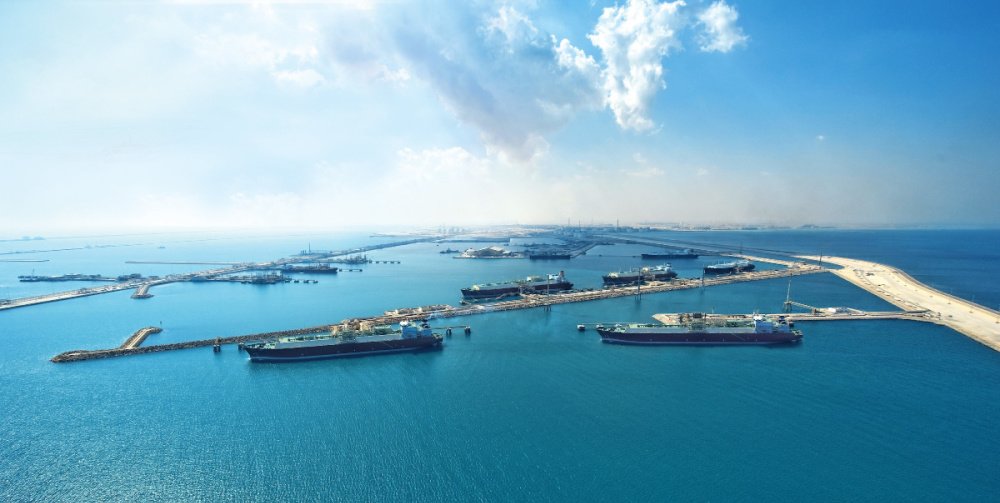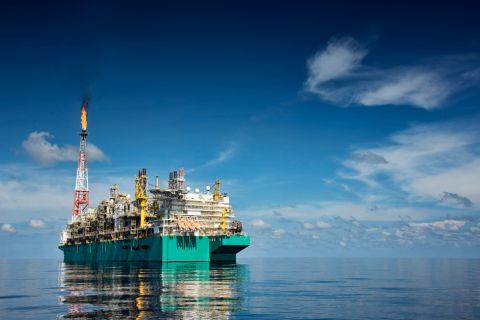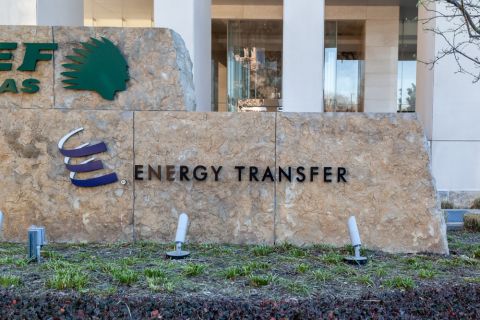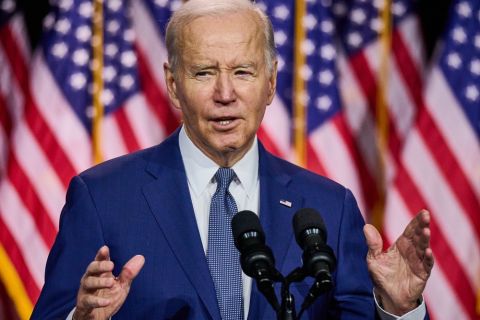Presented by:
Overseeing interests that span the globe from the U.S. to the North Sea, Australia, Qatar and Asia, ConocoPhillips Co. chairman and CEO Ryan Lance knows where the hydrocarbon resources and demand are—and where infrastructure is woefully short.
Among the leading E&P’s many moves in the past year, it added resources in the Permian Basin, signed on for more LNG capacity in the U.S. and abroad and moved its exploration emphasis to existing properties—exiting Argentina, for example.
In the Permian, where it was producing 634,000 bbl/d in the second quarter, Lance expects further growth.
“If you look at the Lower 48 in total, our view is growth this year will be somewhere around 800,000 bbl/d [from all producers],” Lance said. As for next year, “it probably grows that same amount,” predominantly from the Permian.
The basin has several more years to go before peak production. But when the output will peak is “largely a function of commodity price,” he added.
In Alaska, ConocoPhillips is also hoping to receive a permit by year-end to proceed with its Willow project on the North Slope. “That’s potentially a several-hundred-million-barrel resource. The peak rate would be 160,000 bbl/d.”
“The energy system is so complex, so huge, it’s really going to take ‘all the above.’ These transitions can’t be substitutive; they’re always additive. In other words, you can’t pluck oil and gas out of the energy mix, put in renewables and hope to fix it.”—Ryan Lance, ConocoPhillips Co.
It takes six to eight years on the Slope from permitting to development drilling to first production. “The resources are there; the issue is a lot of it’s on federal land. And you can only construct during the winter. But the resource is plentiful.”
Will Alaska’s output ever grow again? “It’s tough to say. Just mitigating the decline is quite remarkable.” In the past decade, there was concern the rate of decline would make the Trans-Alaska Pipeline System no longer operable.
Lance assures all is fine. “It’s well above its low-flow rate, which is what you have to worry about.”
Oil and Gas Investor visited with Lance on his worldview in mid-September.
Nissa Darbonne: Your LNG interests in Qatar and Australia—what’s your view of global gas demand?
Ryan Lance: Well, we’re pretty bullish, which is why we’ve done some of the things we did. The LNG business goes in long waves and cycles. If you just think back to 2018 and 2019, it was pretty much a buyer’s market with single-digit gas prices.
A lot of capacity was coming on at the time. But the demand kept growing and the supply flattened because no new projects were being built.
Then, of course, you get this Ukrainian invasion by the Russians, which accelerated everything with regards to gas. But, even before that, we were quite constructive on demand growth—and growing dramatically.
We expect that there will be a time [of oversupply] towards the end of this decade with four [more] trains in Qatar and more liquefaction capacity in the U.S.
But demand will catch up. So we’re bullish long term on gas demand.
ND: Word is that more global gas supply is essential to the energy transition.
RL: It’s going to take coal out of the system. Asian countries need it and, now, European countries are going to need it because of who their major gas supplier is.
Europe’s going to realize that overreliance on that one gas supplier has been a problem and is going to continue to be a problem.
So all those things together were bullish for long-term LNG demand, which is what prompted us to increase our ownership in our Australian business and to bid and win additional trains in Qatar.
And it prompted our recent announcement of a nonbinding heads of agreement with Sempra Energy [in North America].
ND: You might make more LNG investments?
RL: We’re hopeful there’s going to be more expansion trains in Qatar. And we would like to be a part of that if we can.

ND: With Sempra on the Port Arthur, Texas, LNG facility, you’re in a different type of contract than in Qatar and Australia.
RL: Qatar and Australia are fully integrated projects where we’re an equity owner in the upstream. We’re physically connecting those molecules that we’re developing to a liquefaction plant that’s shipping it to a customer, with whom we have a long-term—typically oil-linked—contract for 20-plus years.
In the U.S., it’s more of a merchant model where gas is just taken off the grid. You’re not physically connecting to a specific train the molecules that you’re producing.
ND: Your recent Permian Basin acquisitions—Concho Resources Inc. for $9.7 billion in stock and Shell Oil’s assets for $9.5 billion in cash—are part of your North American LNG plan?
RL: When we did [these] transactions, we looked at how much [associated] gas we were going to be producing. We wanted to make sure we had access to the waterborne market [price] and not be subject to only Henry Hub prices.
So we saw this disconnect coming. It’s been exacerbated by the Ukrainian invasion, but we saw Europe and Asia as good markets [already].
We looked at all the LNG developers on the Gulf Coast and Sempra [stood] out because they have two trains that are fully permitted at Port Arthur.
They have a site that’s capable of [hosting] seven or eight trains, and they’re one of the best operators in the business.
And we have an option to participate in any expansion projects.
ND: You’re also interested in Sempra’s Energia Costa Azul LNG facility on Mexico’s Pacific Coast.
RL: [With the Port Arthur deal], we got an option to acquire offtake and equity participation in Phase 2 [at ECA in Mexico]. They’re going to build an expansion train that gives us West Coast access to the Asian LNG market.
Sempra is a very unique partner. Not only are they quality [operators], they had the right mix of assets that they were willing to give us expansion options if we were to take an equity in those first two trains [at Port Arthur].
So we agreed to take a 30% equity in the first two trains. And, importantly, we agreed to take about half the offtake.
So we’re going to be responsible for moving 5 million tonnes into Europe and Asia [from the Gulf Coast].
ND: The project in Mexico, I’m seeing the gas will be sourced from the Permian and also from the Rockies.
RL: The gas that’s in the El Paso pipeline—the one that gets gas to the [U.S.] West Coast—comes from the Rockies, the San Juan Basin and the Permian. Some makes its way into northern Mexico. We have capacity on that line.
More gas is going to be required to fill those [new Sempra] trains. And that would probably come largely from the Permian because that’s the only growing source.
ND: Is there a new price floor for U.S. gas? Maybe $5?
RL: I’m not sure it’s that, but it’s tough to say. Right now, we’re low on U.S. storage. The supply hasn’t caught up. But it’s coming. So you shouldn’t be thinking about $7 or $8 gas long term.
I’m not sure it’s going to be $2.50 or $3. But $3.50, $4 or $4.50—it’s probably in that range once the system kind of re-equilibrates, Europe’s storage is full and the U.S. gets back to normal storage levels.
The supply is coming; it just takes a few quarters. The rigs are working in the Permian and the Haynesville. Unfortunately there’s not enough pipe from the Marcellus. That’s always been a problem.
But we don’t expect $7 and $8 gas to persist. It’s going to come back down to somewhere in [the $3.50 or $4.50] range.
ND: You’ve testified to Congress on how the oil and gas business works. Do you see any change on getting more pipe out of the Marcellus?
RL: It’s desperately needed. We’re all watching what’s happening in Congress.
If we can’t get the pipelines built to deliver gas to [the Gulf Coast], it’s going to be a tough situation. We’re not going to be able to export as much as we should to help our allies. And what happens even to the domestic price of gas?
We have to get the pipelines built from the Utica, the Marcellus, the Haynesville and the Permian—both to the Gulf Coast and to the West Coast.
Exporting more to Mexico is necessary as well to make sure we get the North American system properly balanced relative to what we’re trying to do with the rest of the world.

ND: No matter the outcome of Russia’s war on Ukraine, is its commercial reputation burnt for another century?
RL: I was in Europe [recently], talking to some of the major suppliers and consumers. My sense was Russia has permanently damaged its reputation as a consistent and reliable supplier of both oil and gas.
ND: Would Europe resume Russian imports?
RL: I think it’s probably naive to believe Europe would never import more gas and oil from Russia. They probably would.
But I don’t think they would ever go back to the singular reliance that Germany and some of the others had on Russia. I can’t imagine that they would go back to that situation again.
So what you see happening is Germany is permitting and building regas facilities as fast as it can. They’re starting up nuclear plants again. They’re actually starting up coal-fired power plants in the U.K.
I think you see a recognition that diversity of energy sources is critical to your country’s energy security—and, at the end of the day, to your country security.
So will Russia never be a supplier to Europe again? I kind of doubt that. But I also think it won’t be the predominant supplier to Europe.
ND: Europe had been on path to reach its climate goals.
RL: They’re quickly trying to diversify supply sources and running into “How do we do that sustainably?”
That’s their real conundrum: How do they ensure their energy security at the same time they’re meeting their climate commitments?
ND: At a higher cost of gas abroad, is there a possibility of a global financial crisis and an upset to world political order?
RL: I think it’s happening right now in Europe. While I was in Europe, a gentleman told me he has an 800-square-foot flat in London with no air conditioning—just, basically, power and cooking. His last bill was £450—for one month.
The U.K. is trying to levy super-profits taxes on producers to redistribute that money. Yet, when you put more taxes on producers, what do producers do? They cut their capital program, then there’s less supply.
So you don’t tax something to get more of it.
That’s the real conundrum they’re putting themselves in.
There are countries there that are in a recession today and their energy costs are going through the roof and their solution is to tax it and redistribute the wealth to help the consumers, which is laudable, but they’re taxing the thing they want more of.
I hope the Yellow Vests of France don’t come back and [spread] in Europe, but [Europe’s leaders] are walking a very tight line right now to address energy security and national security and do it such that the economy doesn’t get destroyed in the interim.
It’s going to be very tough.
A lot will depend on the harshness of the winter. I hear stories of people cutting down trees and putting wood in their backyard to have fuel and heat for the winter. Those are pretty extreme responses to the problem that they’re dealing with today.
ND: On the “E” of ESG, the industry appears to be doing a remarkable job on emissions abatement.
RL: I think our industry has three things we have to fix, and they’re very fixable: We’ve got to take care of fugitive emissions from our operations, we have to take care of flaring and we have to deal with orphaned wells.
Those are the three things this industry is working hard to do.
On flaring, we have to eliminate non-routine flaring. I think we’re becoming pretty close to getting there. Some of the smaller operators are still flaring too much and that’s largely because the pipeline infrastructure isn’t built to handle all the gas.
Again, that goes back to permitting.
But we can take care of flaring.
ND: What if there is methane regulation?
RL: We’re fine with trying to regulate it. But let’s do it smartly.
We just joined Oil & Gas Methane Partnership (OGMP) 2.0, which is government, companies and NGOs working together with third-party verification to understand what you’re emitting and how you can reduce that over time to zero.
The technology’s not quite there yet to quantify it. We can see it when it’s happening. For example, if a flange breaks apart a bit and leaks, you can identify it with [gas-detection] cameras. But you can’t really quantify the amount.
We’re sensoring our operations so we can identify when something happens. Then we dispatch our operators with cameras to look at what’s leaking, such as a hatch on a tank top that may be ajar.
I think regulation is catching up with what industry’s been doing the last five or six years voluntarily. And OGMP 2.0 is just trying to take that to the next level.
ND: What else?
RL: The energy system is so complex, so huge, it’s really going to take “all the above.” These transitions can’t be substitutive; they’re always additive. In other words, you can’t pluck oil and gas out of the energy mix, put in renewables and hope to fix it.
They’re all additive. And right now we need “all the above.” We need oil, we need gas, we need wind, we need solar, we need nuclear, we need nature-based solutions.
When you recognize that it’s going to take everything, then you can get into quality policy conversations around what sort of infrastructure is needed to help support oil and gas.
What’s the right kind of infrastructure? How do we do that in North America to offset Russian crude or Russian gas?
What sort of infrastructure in terms of high-voltage transmission lines is needed for wind and solar? How do we permit that?
What do we think about offshore wind, and what are the permit requirements? What do we think about nuclear, and how do we build “small nuclear?”
And how do we take emissions out of coal? Coal is going to persist in the mix for a while. How do we clean it up? You can’t just take coal out tomorrow, but over time you want coal to get displaced with natural gas or with a lower-carbon alternative.
When you can get your mind wrapped around “It’s going to take all the above,” you can build policy for each one of those energy sources to make sure it fits that whole scheme.
That’s been my message to Washington, D.C.: It’s all of the above. And if we’re going to incentivize and spend government money on certain things, can we do the cheap things first?
Can we do the things that have the lowest cost of mitigated carbon? Can we do those first and really make a difference?
ND: On this path, the energy world should be remarkable starting with the next couple of generations.
RL: There’s a way to ensure your energy security, your national security and your climate goals. There’s a way to manage it.
Unfortunately, collectively we’re not managing it as well as we could.
There’s a better way to do this.
Recommended Reading
Canada’s First FLNG Project Gets Underway
2024-04-12 - Black & Veatch and Samsung Heavy Industries have been given notice to proceed with a floating LNG facility near Kitimat, British Columbia, Canada.
Balticconnector Gas Pipeline Will be in Commercial Use Again April 22, Gasgrid Says
2024-04-17 - The Balticconnector subsea gas link between Estonia and Finland was damaged in October along with three telecoms cables.
Energy Transfer Asks FERC to Weigh in on Williams Gas Project
2024-04-08 - Energy Transfer's filing continues the dispute over Williams’ development of the Louisiana Energy Gateway.
Apollo Buys Out New Fortress Energy’s 20% Stake in LNG Firm Energos
2024-02-15 - New Fortress Energy will sell its 20% stake in Energos Infrastructure, created by the company and Apollo, but maintain charters with LNG vessels.
EQT CEO: Biden's LNG Pause Mirrors Midstream ‘Playbook’ of Delay, Doubt
2024-02-06 - At a Congressional hearing, EQT CEO Toby Rice blasted the Biden administration and said the same tactics used to stifle pipeline construction—by introducing delays and uncertainty—appear to be behind President Joe Biden’s pause on LNG terminal permitting.






